Did You Know?
The ancient city of Tulamba holds historical significance as it was once seized and ruled by Alexander the Great during his expeditions in the region.
30°30'33.3"N 72°14'37.6"E
The ancient city of Tulamba holds historical significance as it was once seized and ruled by Alexander the Great during his expeditions in the region.
The Best Time to Visit Punjab Province is Year long as it has bearable Cold winters and Hot Summers. However, Summers can get really Hot and precautions are recommended during Daytime visits.

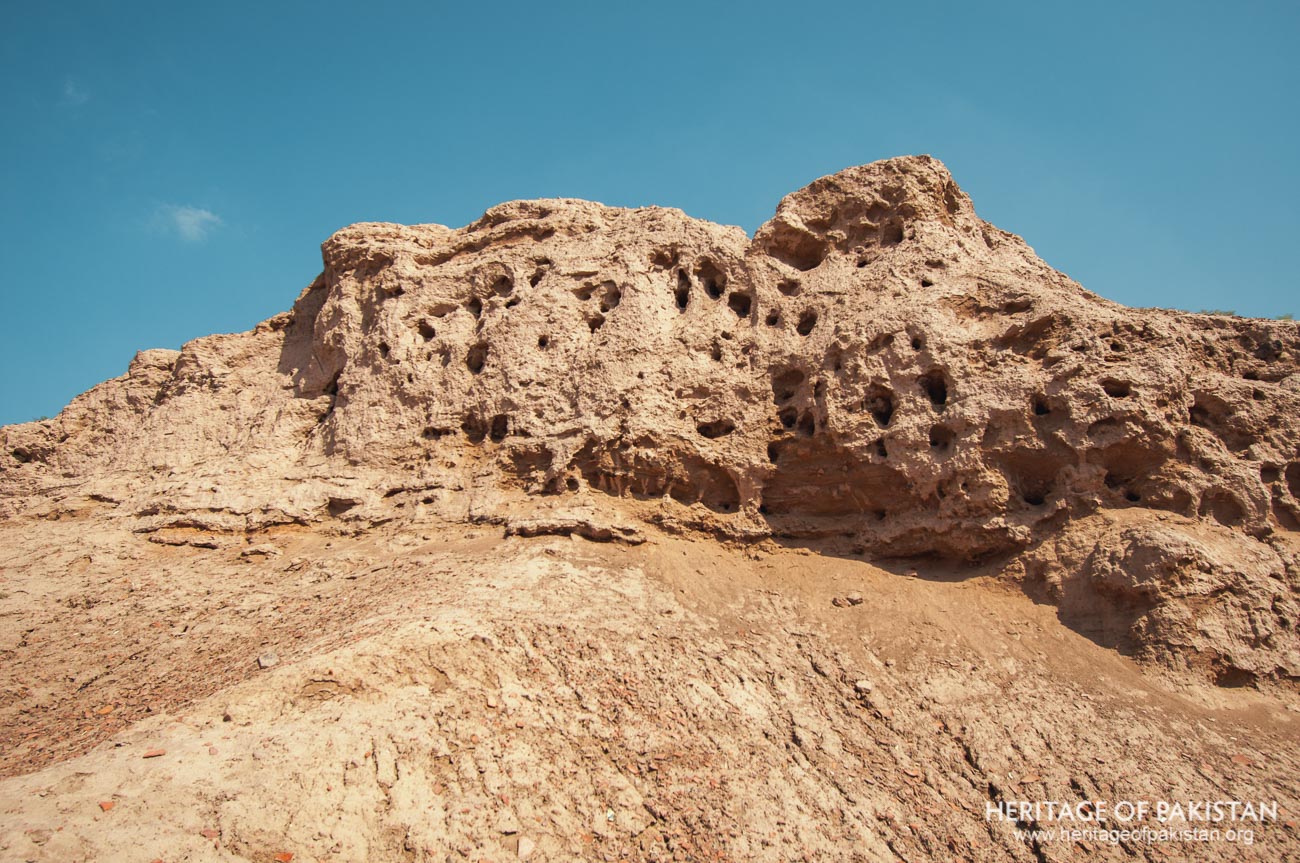
Tulamba mound or Tulamba ruins is an ancient archaeological site found in the town of Tulamba, Punjab. Tulamba is a small town located approximately 90 km northeast of Multan, and is located in the Mian Chanu Tehsil of the Khanewal District.The ruins of the old city of Tulamba are situated 2km from the current town, and a wealth of cultural artifacts have been unearthed from this archaeological site. These excavations have revealed pottery and other relics that date back to about 2500 years. Notably, the decorative pottery with geometric and other patterns reflects the Hindu or Buddhist period. Coins from various eras have also been found, adding to the uniqueness of the site. However, the archaeological site has experienced degradation over time, resulting in a significant reduction in its size and constant encroachment threatens it.
Tulamba has witnessed various important historical events . Because of its strategic location near Multan, it attracted numerous invaders, from Alexander the Great to Timur Lane and Muhammad bin Qasim. Tulamba was a critical point of encounter for any northern invader on their way to Multan. As per Greek accounts, Alexander the Great passed through this region as well and was met with resistance. Similarly, it is also said that Sultan Mahmud Ghaznavi, on his expeditions, passed through this area. Furthermore, a fort, thought to have been built by Sher Shah Suri exists in the middle of the new town. This fort is situated just a few kilometers from the mound of the ancient city.

Approximately 2km from the existing town of Tulamba, one can find the remnants of an ancient settlement and its fort, now represented primarily by a dilapidated mound. Evidence of various structures and ruins from the British colonial era was still discernible at this site. Notably, Alexander Cunningham, in his comprehensive work 'Ancient Geography of India', provides an insightful description of Tulamba, indicating the presence of numerous archaeological structures during his time. He also narrates the historical event of how Alexander the Great seized Tulamba and established his reign over the area after defeating the local Mohli military forces.
Cunningham's detailed account of Tulamba is particularly revealing. He wrote, "I have visited this place twice. It consisted of an open city, protected on the south by a lofty fortress 1000 feet square. The outer rampart is of earth, 200 feet thick and 20 feet high on the outer face, with a second rampart of the same height on the top of it. Both of these were originally faced with large bricks, 12 by 8 by 2 ½ inches. Inside the rampart, there is a clear space or ditch 100 feet in breath, surrounding an inner fort 400 feet square, with walls 40 feet in height, and in the middle of this there is square tower or castle 70 feet in height."
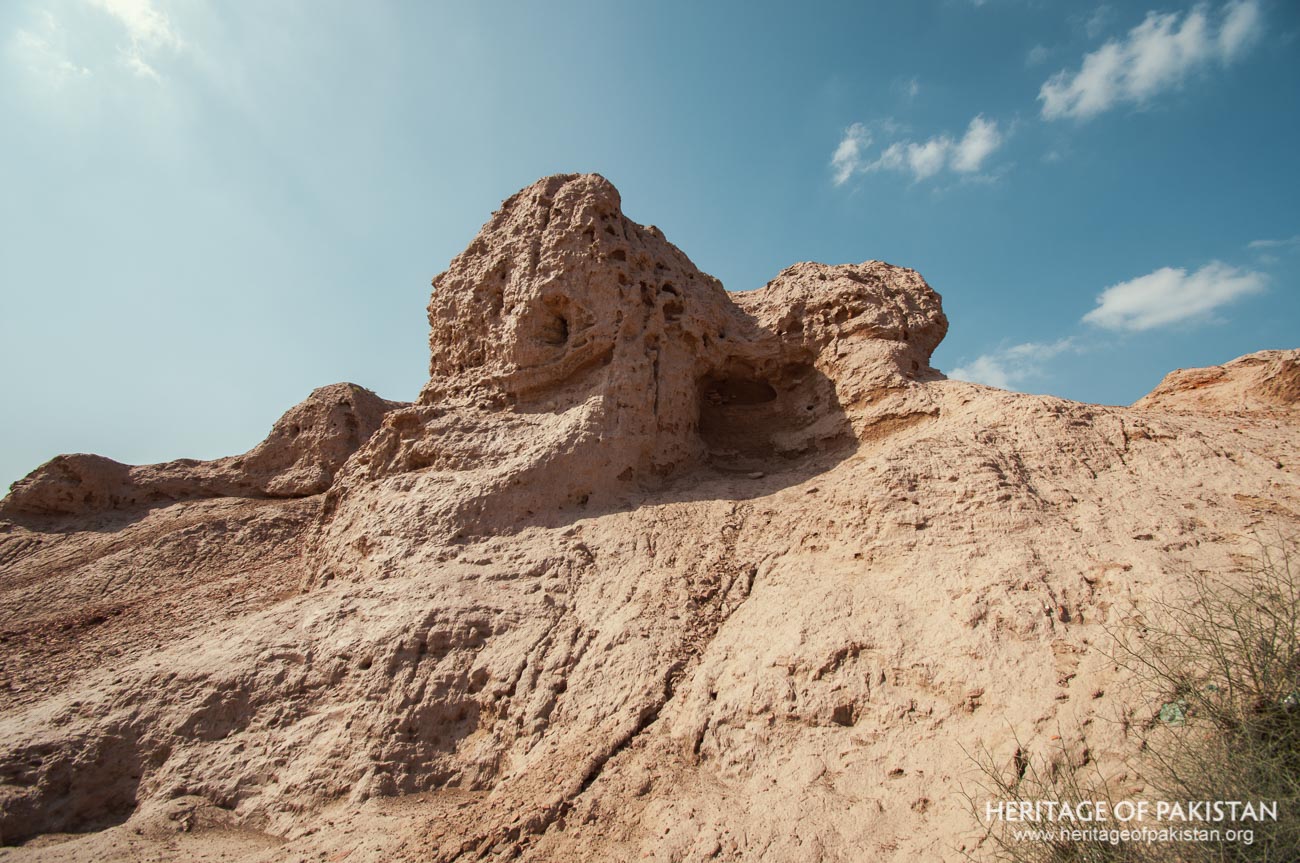
In the course of his invasion into the Indian subcontinent from 325 BC to 327 BC, Alexander the Great found himself engaging with a wide array of indigenous cultures and communities. Notably, during his march towards Multan, the then capital of Mali, he encountered significant resistance from the Malii, or Malohi tribe, inhabiting the fortified town of Tulamba.
The Malii people, a tribe of the wider Jat community, exhibited a strong and resilient character in their resistance against Alexander's formidable forces. Their defensive measures took advantage of Tulamba's strategic location along the southern bank of the River Ravi, known to the Greeks as Hydraotes, during that period.
Alexander's campaign against the Malii was a strategic pursuit that led him across the River Ravi. While some of the Malii were killed in the conflict, the others sought refuge within the confines of Tulamba fort. The town was notably fortified with strong brick walls and substantial earth ramparts, reflecting an understanding of defensive architecture.
Greek historical narratives provide an estimate of Mali's military strength, which stood at approximately 40,000 infantry and 3,000 cavalry. The Malii soldiers displayed exceptional bravery and resilience, providing strong resistance against Alexander's forces. However, military prowess of Alexander's army eventually led to the capture of Tulamba and defeat of the locals. After the capture of Tulamba, Alexander's next objective was the city of Atari, located approximately 20 miles from Tulamba which then he captured.
As part of the historical accounts of Muhammad bin Qasim's conquest of Sindh in the 8th century AD, there is an assertion that he extended his military excursion to Tulamba during his campaign of Multan. Muhammad bin Qasim, an Arab military commander of the Umayyad Caliphate, is well-known for his invasions in the Indian subcontinent, marking the advent of Islamic rule in the region. The route taken by him when he passed through Tulamba during this campaign has since been referred to as "Qasim Bazaar". This anecdote connects Tulamba to an important historical period, marking the inception of Muslim rule in the Indian subcontinent.
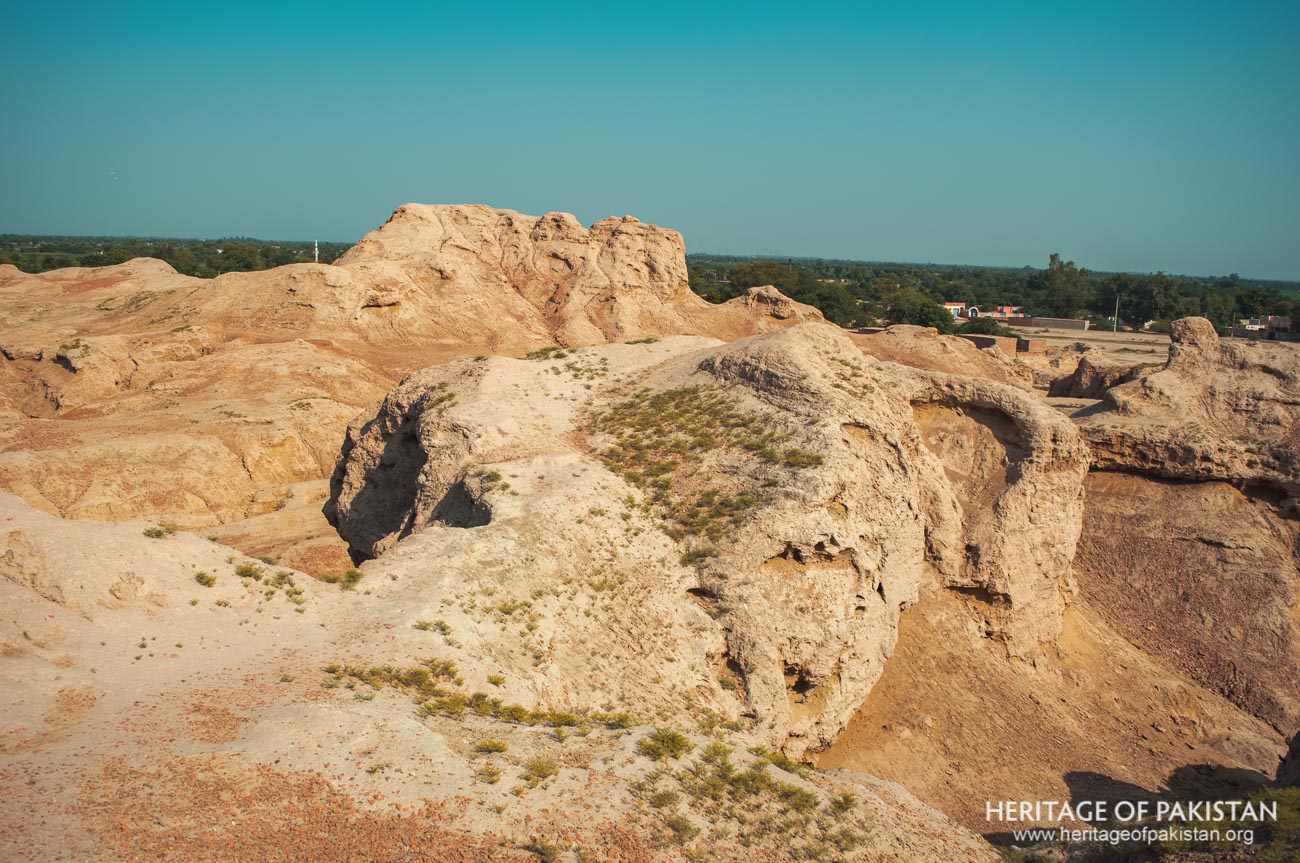
Mahmud of Ghazni, an important figure in the history of Central and South Asia, reigned over the Ghaznavid Empire from 998 to 1030 AD with his capital in Afghanistan. Known for his military campaigns, Mahmud Ghaznavi conducted numerous incursions into the Indian subcontinent, significantly shaping its political and cultural landscape. One of his primary objectives was Multan, a key region known for its wealth and strategic position.
In this historical context, a tradition exists in Tulamba claiming that the town of Tulamba was among the territories conquered by Mahmud Ghaznavi. This claim finds resonance in the writings of Sir Alexander Cunningham, the British archaeologist and army engineer, who is noted for his works on Indian history and archaeology. Cunningham postulates that this tradition is likely to be rooted in historical reality, given Tulamba's geographical proximity to Multan. It would have been strategically viable for Ghaznavi to engage with the town. Located just a few miles off his direct route to Multan, Tulamba could have served as a strategic outpost or even as a recuperation point for his troops.
There is no archaeological evidence that Ghaznavi conquered Tulamba. However, the conjectural logic and common belief make a strong case for this event happening in the area's history.
During Timur's invasion, Tulamba's old town suffered extensive destruction. It was looted and burned, and its residents were brutally killed. Despite this, Timur spared the old fortress, likely due to its strength and because conquering it could delay his primary mission: the march towards Delhi.
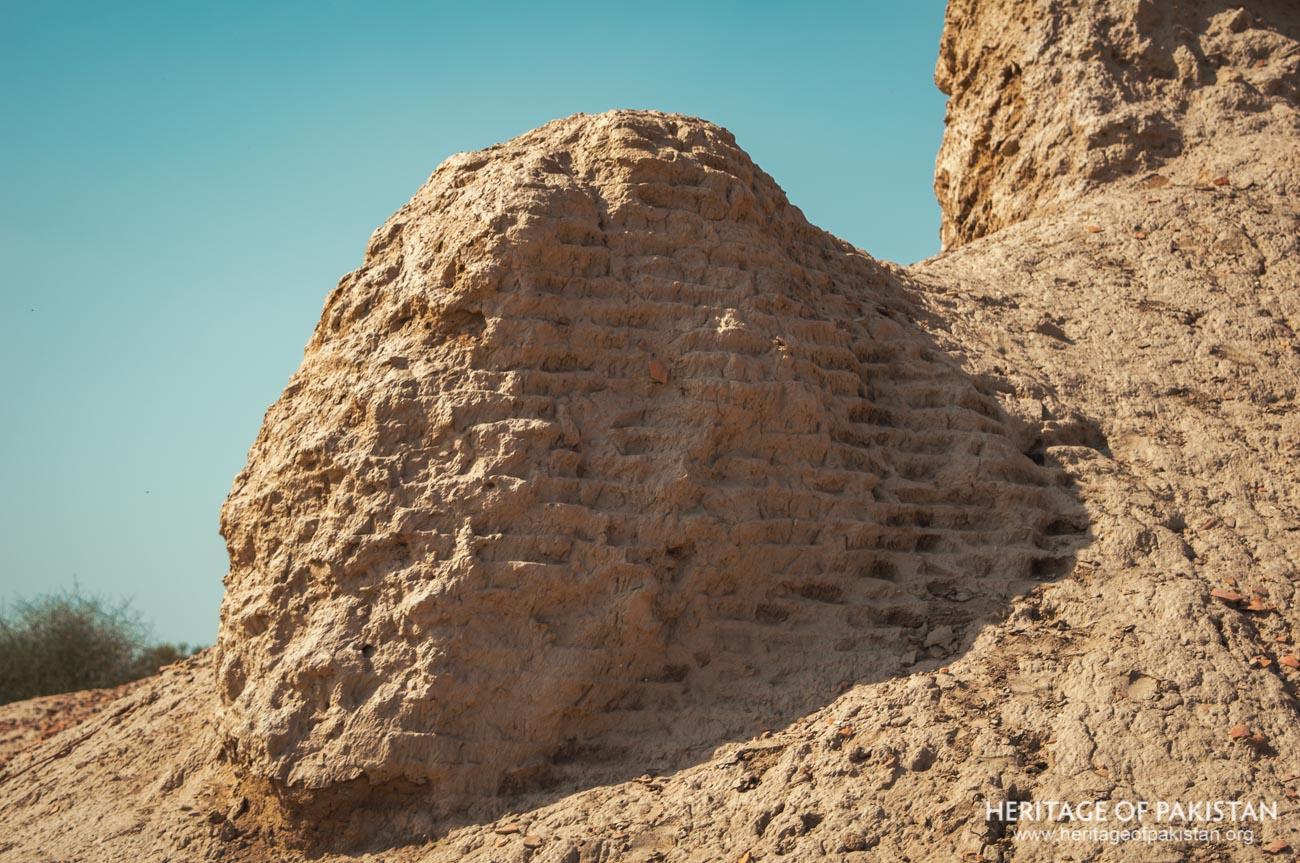
The region surrounding Tulamba also holds significance in Sikhism due to a notable visit by the founder of the religion, Guru Nanak. It is reported that during his stay near Tulamba, he encountered Shaikh Sajan, a resident who had a reputation of misleading travelers with his outward display of piety. Sajan maintained both a mosque and a temple to draw in both Muslim and Hindu travelers. Guru Nanak, despite recognizing Sajan's ruse, chose to accept his hospitality.
In a turn of events, Guru Nanak's presence reportedly transformed Sajan, eliminating his fraudulent ways and converting him into a disciple. Subsequently, Sajan transformed his dwelling into a Dharamshala, or a travelers' rest house, and began propagating Guru Nanak's teachings within the local community. In later years, Bhai Jodh, a Sikh preacher during the era of Guru Har Rai (1630-1661), used Tulamba as his base to spread the Sikh faith. His lineage went on to establish a Gurdwara, a Sikh place of worship, in 1913. A Gurdwara was established at Sajan's inn and currently lies in the village of Makhdoom pur Pahoran, which is between Tulamba and Kabirwala.
Ruins of another Gurdwara can also be found within the new town of Tulamba near the main Bazar. However, not much of the structure remains now. After the 1992 Babri Masjid martyrdom in India by Hindu fanatics, retaliatory acts in Pakistan resulted in damage to this small Gurdwara, ultimately leading to its destruction as per local accounts. Despite this, numerous bricks bearing religious inscriptions survive to this day. These inscribed bricks, now embossed on tiles, provide crucial evidence of the former location of the Gurdwara. Similarly, local accounts suggest the existence of a Hindu temple in Tulamba, which also fell victim to the aforementioned riots. Presently, a school occupies the site where the temple once stood, with no architectural traces.
Local folklore suggests that the destruction of Tulamba was a result of divine retribution, inflicted due to the immoral actions of a regional king named Dillu Roy. Such mythologies, attributing destruction to divine wrath, are commonly associated with various ancient cities throughout Punjab, including the city of Dillu Roy near Jampur, located in the Rajanpur district.
Despite these widely circulated tales, Alexander Cummingham proposes a more plausible cause behind the desertion and destruction of Tulamba. His analysis suggests that the alteration in the course of the River Ravi, which occurred approximately 300 years prior to his writing, may have led to the city's abandonment. This change in the river's trajectory effectively severed the city's water supply, leaving the inhabitants with no choice but to relocate.
The migration away from the old city is credited to Shujawal Khan, who held a prominent position as the son-in-law and minister of Mahmud Langa of Multan, and later as the brother-in-law of his successor, around 1510 to 1525 AD. A similar sequence of events, driven by hydrological changes, is believed to have precipitated the earlier abandonment of the ancient city of Atari.
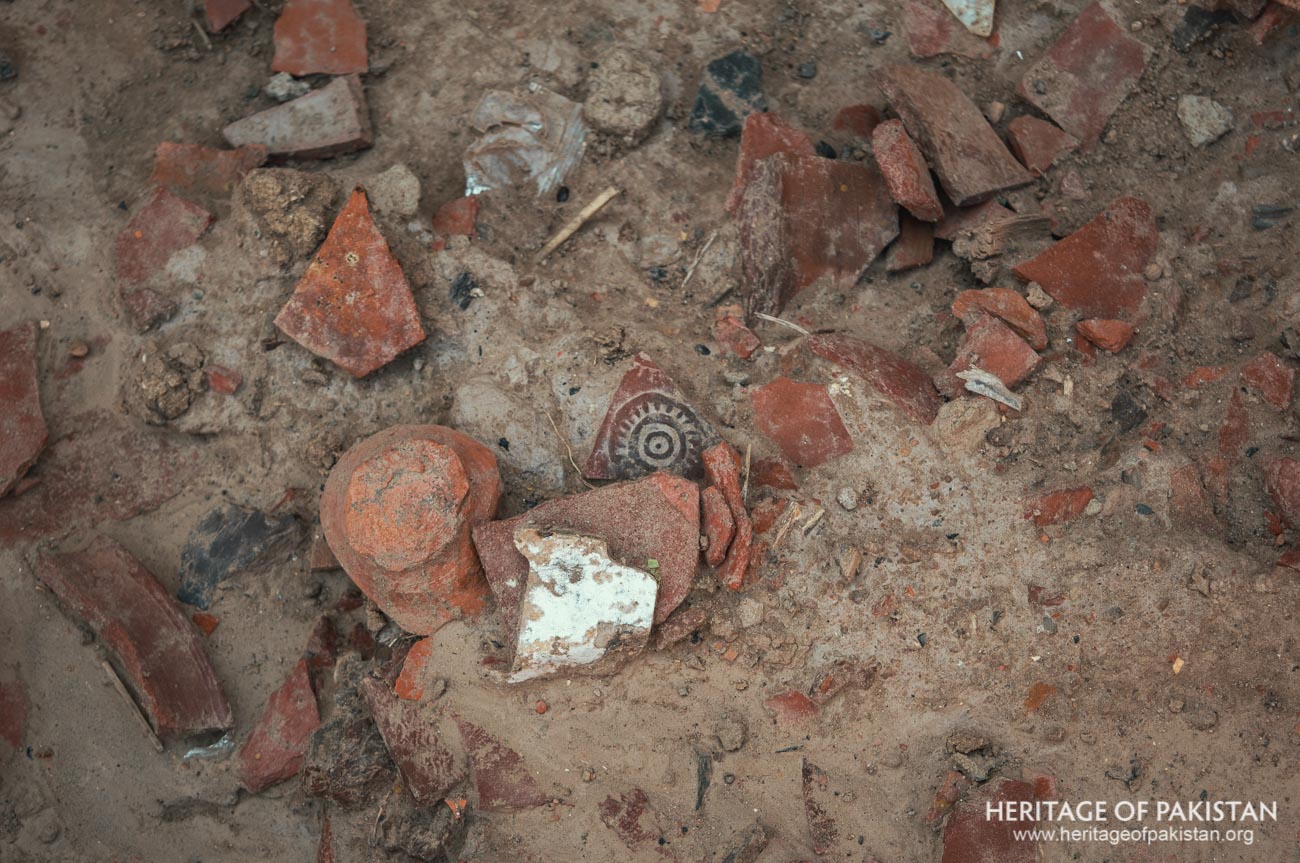
A diverse range of pottery fragments dating from various historical periods, including the Buddhist era, Hindu era, and later epochs, have been unearthed in Tulamba. These artifacts often bear intricate decorative motifs. Usually, after rainfall these pottery fragments becomes visible at the site of the Tulamba mound in large quantities as soil washed away.
Ahmed Hassan Dhani's research reveals that a comprehensive series of historical relics have been uncovered here, spanning from the eighth to the sixteenth century. A key discovery within these timelines is the 'Tulamba stamped ware,' showcasing a rich array of approximately 200 designs. The painted pottery exhibits designs applied directly onto the vessel surfaces, featuring an assortment of parallel lines, triangles, loops, cross-hatching, and zig-zag lines. Additionally, pottery bearing impressed designs have also been identified. These designs encompass volutes, squares, diamonds, wheels, circles, ducks, human faces, and a variety of elliptical and wavy forms.
The pottery is typically crafted from well-purified clay and exhibits significant hardness. Among the assortment of ceramics, researchers have identified large pans, bowls, small cups, water pitchers, cooking vessels, and a variety of storage jars for food and water. These findings underscore the richness and diversity of the culture within the ancient city of Tulamba.
The remains of a medieval fort can also be found in the town of Tulamba. The fortress was constructed under the reign of Emperor Sher Shah Suri. Currently, the structure is in a state of decay, with significant damage and encroachments by local inhabitants, who have used the fort's bricks to construct their own houses This situation underlines an urgent requirement for comprehensive conservation and restoration efforts.
At present, the Government Girls High School and offices for local municipal government committees are hosted within the confines of the fort. The fortress has become merged into the urban fabric, surrounded and encroached by residential buildings and shops. In some areas, the demarcation between the fortress and neighboring dwellings is blurred, with their walls converging and forming an indistinguishable structure, which is quite concerning.
Architecturally, the fort showcases twelve bastions and its merlons are still observable. The construction predominantly utilizes mud mortar and three different brick tile sizes. The fortification wall is markedly damaged in several sections, with commercial shops replacing the original architectural features. This indicates an evolving urban landscape, albeit at the cost of the fortress's structural integrity.
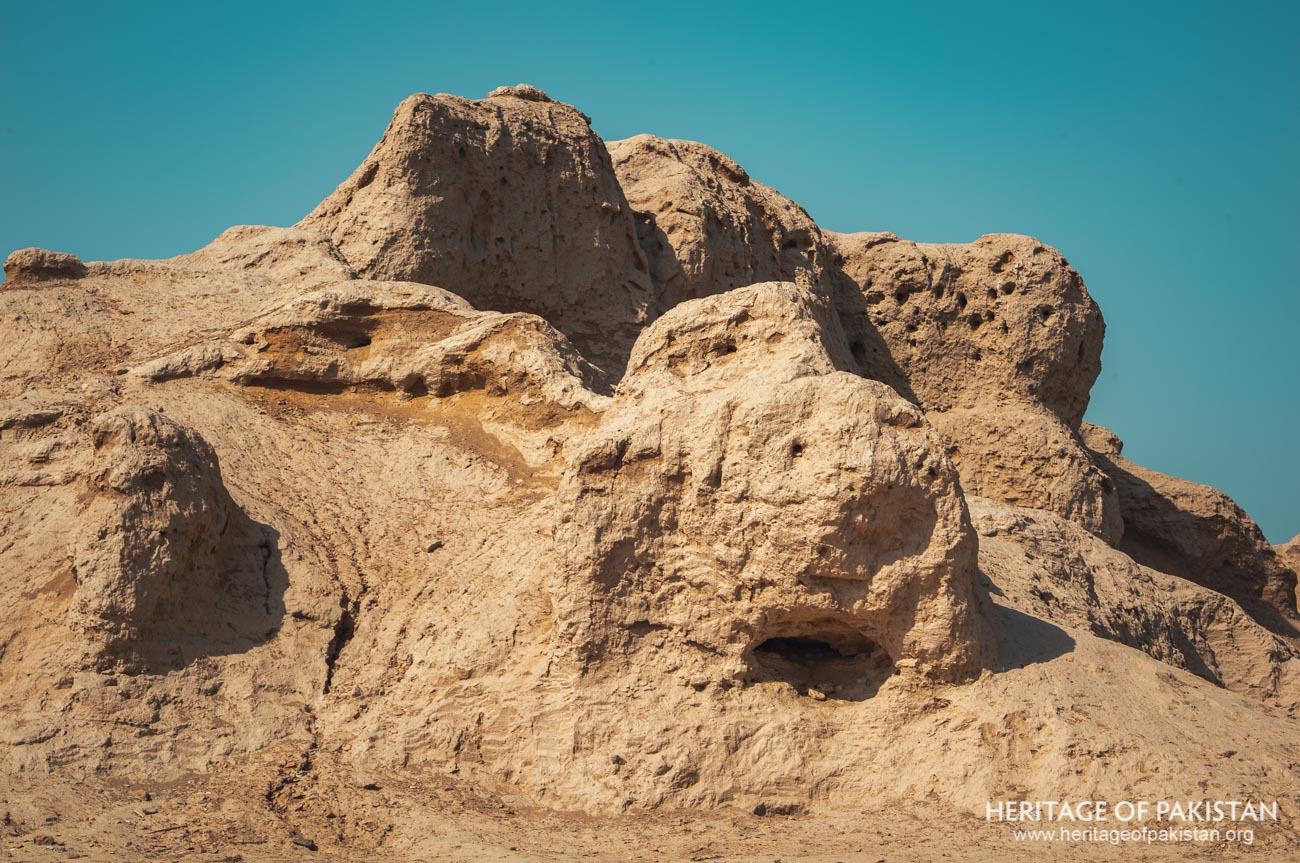
Discover the Tulamba Ruins image gallery and immerse yourself in photographs

All Photographs by Syed Noor Hussain and Sania Azhar.
All Rights Reserved. Photos may be used for Non-Commercial, Educational, Artistic, Research, Non-Profit & Academic purposes.
Commercial uses require licensing agreement.


Add a review